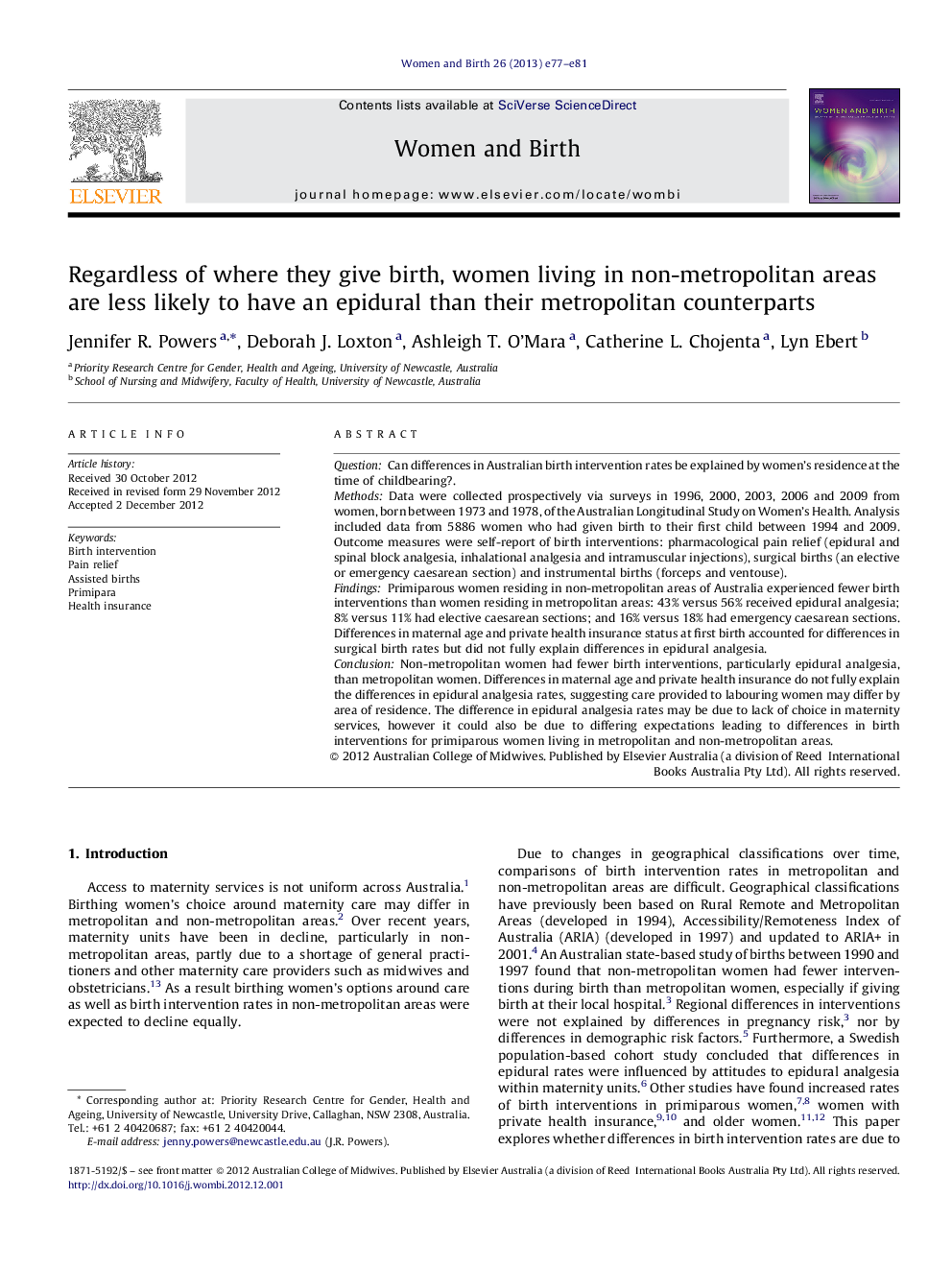| Article ID | Journal | Published Year | Pages | File Type |
|---|---|---|---|---|
| 2636309 | Women and Birth | 2013 | 5 Pages |
QuestionCan differences in Australian birth intervention rates be explained by women's residence at the time of childbearing?.MethodsData were collected prospectively via surveys in 1996, 2000, 2003, 2006 and 2009 from women, born between 1973 and 1978, of the Australian Longitudinal Study on Women's Health. Analysis included data from 5886 women who had given birth to their first child between 1994 and 2009. Outcome measures were self-report of birth interventions: pharmacological pain relief (epidural and spinal block analgesia, inhalational analgesia and intramuscular injections), surgical births (an elective or emergency caesarean section) and instrumental births (forceps and ventouse).FindingsPrimiparous women residing in non-metropolitan areas of Australia experienced fewer birth interventions than women residing in metropolitan areas: 43% versus 56% received epidural analgesia; 8% versus 11% had elective caesarean sections; and 16% versus 18% had emergency caesarean sections. Differences in maternal age and private health insurance status at first birth accounted for differences in surgical birth rates but did not fully explain differences in epidural analgesia.ConclusionNon-metropolitan women had fewer birth interventions, particularly epidural analgesia, than metropolitan women. Differences in maternal age and private health insurance do not fully explain the differences in epidural analgesia rates, suggesting care provided to labouring women may differ by area of residence. The difference in epidural analgesia rates may be due to lack of choice in maternity services, however it could also be due to differing expectations leading to differences in birth interventions for primiparous women living in metropolitan and non-metropolitan areas.
